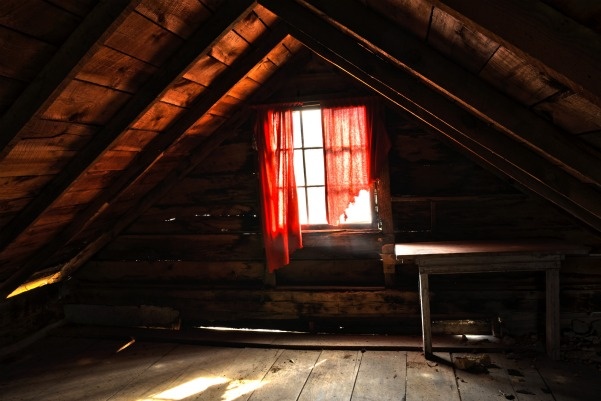Many potential customers in the window treatment and draperies niche think the only value of draperies and curtains is aesthetics, but that’s simply not true. A component of the value proposition is that a window treatment can save them money via insulation – and who doesn’t love saving money? Whenever a product or service saves a customer money, after a certain length of time known as the payback period, the initial purchase pays for itself. Today I’m going to show you how to incorporate the value proposition of reducing heating and cooling costs with window treatments into your content strategy.
But remember, we don’t want to irritate leads by inundating them with too many calls to action or sales pitches. Instead, our goal is to create easily digestible, sharable content that actually provides the leads with something they will value. Not only do we want to create something of value to build trust with our audience and flex our knowledge of the industry, but we also want to create something valuable because it encourages the audience to share the content with their friends through digital mediums like Facebook.
To that end, I will provide value to the audience by teaching them various ways to insulate their windows, which will include draperies, but will also provide alternatives with the intention of solving the audience’s problem.
The Best Time to Insulate Your Windows
As indicated by the division of vitality, “Warming and cooling represent about 48% of the vitality use in a commonplace U.S. home, making it the biggest vitality cost for generally homes.” There is by all accounts a misguided judgment that window protection arrangements are just successful in the winter. Although heating a home can cost twice as much as cooling it, window insulation does improve energy efficiency in the warmer months as well. In the long term, opting to insulate your windows can save significant chunks of money.
But what is the absolute best time to insulate your windows? Naturally, that depends a great deal on the climate in your area. Nevertheless, it’s typically best to insulate your windows before any extreme whether arrives, be it hot or cold. For instance, if you lived in a hot equatorial region, it’s best to insulate your windows before the hottest part of the year because it maximizes savings. Conversely, if you live in a region that experiences lower temperatures, its best to be prepared before the coldest time of the year sets in.
Window Treatments
Window treatments inherently provide a level of insulation because they act like a blanket for your windows. However, some window treatments were specifically designed for energy efficiency. Thermal curtains, as the name implies, insulate windows and come in two forms. The first form is a type of retractable blind that is drawn over a window vertically. The second is a thick hanging fabric flanking either side of the window comprised of multiple layers of fabric, and may include acrylic foam as an insulating barrier.
In the hotter portion of the year, thermal curtains help maintain a cooler indoor temperature, and thus reduce your cooling bill, by blocking sunlight. In the cold seasons, thermal curtains prevent heat from escaping, and some thermal curtains have special ties to bind them to the walls to further prevent irksome drafts. The main drawback to thermal curtains is that they function optimally when fully closed, though it is a simple matter to open them during the day if you wished for more natural light.
Caulking
Caulking is another popular solution for sealing windows to ensure energy efficiency. It typically works best when using caulk to seal gaps no larger than a quarter inch, and it’s a cheap, easy, and fast solution. If your windows have cracks around them, then it’s a good idea to use caulking in conjunction with another insulating solution for peak efficiency.
A drawback to caulk, however, is that it can be messy and visually unappealing. However, it is an efficient and practical solution, and you do have the option of painting over caulk to hide it, though be aware that silicone-based caulks cannot be painted over. Lastly, also be aware that caulking is not a permanent solution, and will need to be reapplied to be properly maintained.
Wedges and Draft Blockers
This solution goes by several different names, including draft blockers, draft guards, wedges and snakes, among others, and is ideal for those who love DIY projects because it can be easily made at home. If you dislike DIY projects, don’t worry. You can easily purchase these online or at a home improvement store. Many draft blockers were originally designed to fill the gaps underneath doors.
Although you can re-purpose one designed for a door to seal the bottom of a window, there are some products designed specifically for windows. For those that want to embark on a simple DIY project, you really only need two things: some sort of fabric and an insulating material. If you have basic sewing skills, you could simply measure the length of the window and create a cylinder of fabric. In some cases, a long sock may suffice.
Then, simply fill the fabric with the insulator. Common solutions you may already have laying around your home include rice, popcorn, dried corn, and dried beans. The only real drawbacks to this solution is that they aren’t as efficient as the previous solutions, and that they only insulate the bottom of your window.
Window Film
Window film is another highly popular solution for insulating windows, because, in part, it’s so demonstrable. I imagine most people have seen window film applied on an infomercial at some point in their lives. Admittedly, it is a smart solution because it’s easy to apply. All you need is tape (which is typically included) to apply it to a window frame and a hair dryer to heat the film and draw it taught.
However, it’s not perfect. Some people detest the look of film covering their windows, which could make a room less aesthetically pleasing. Additionally, it may be hard to remove the film in the future because the double sided tape may wreak havoc on your paint or finished frame, and it could leave behind a gummy residue that’s difficult to clean.
Final Thoughts
The main goal here is to offer the audience with solutions to their problems so they can save money. And while it’s true that I offered window treatments as one of their solutions, our goal isn’t to make a sales pitch. Instead, we want to build trust with the audience by showing them genuine alternatives they had not already considered.


